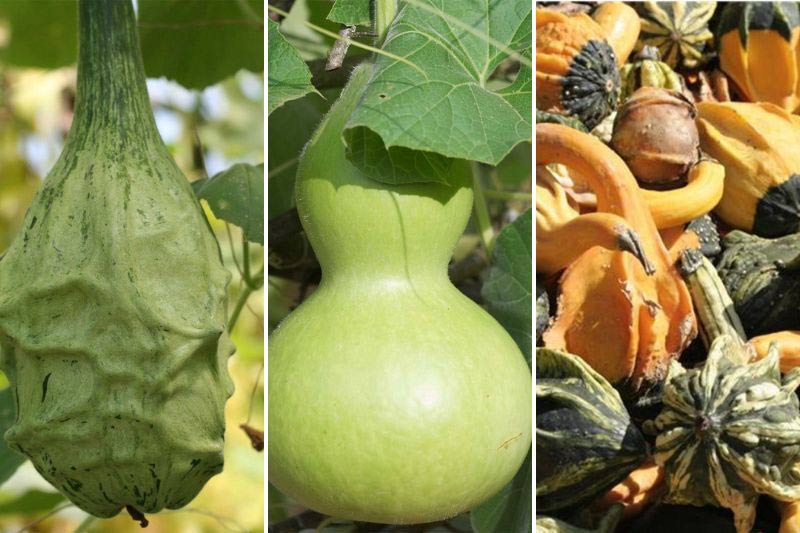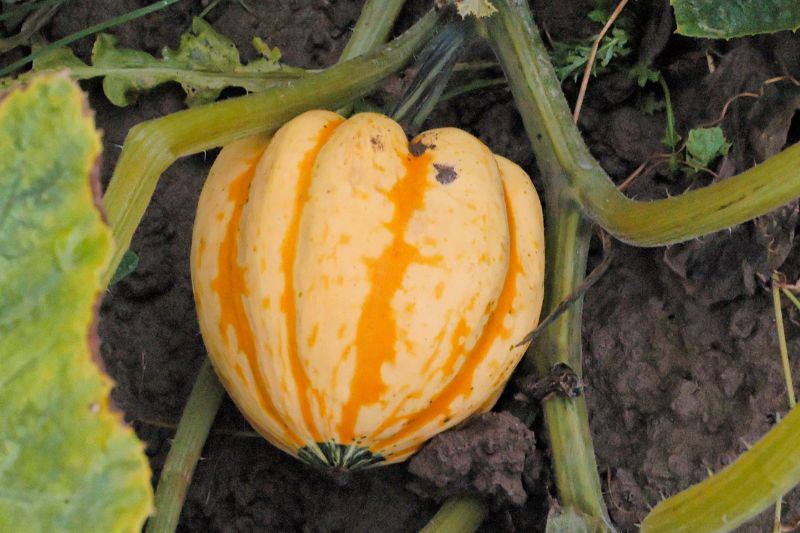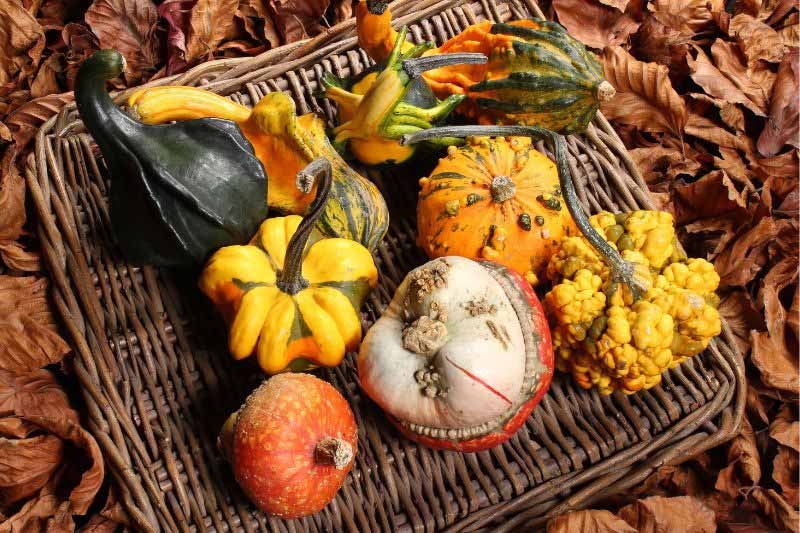Ornamental gourds are beautiful decorative squashes that lend themselves to many uses. Not edible, they are appreciated for their ornamental qualities. Their bright colours and sometimes curious shapes stand out to bring a rustic, natural charm to interiors.
They are as easy to grow as most other squashes. Then, to keep them for as long as possible, it is essential to harvest carefully and dry them properly, storing them in a suitable place.
Here is how to harvest and store ornamental gourds so you can enjoy them for many months.
How to recognise ornamental gourds?
Ornamental gourds belong to the squash family: the Cucurbitaceae. Unlike pumpkins, large pumpkins or other courgettes, they are not edible. Their bitter flesh is in fact toxic. Ornamental gourds are therefore used only as decorative squashes, and also for making certain objects and utensils.
There are several varieties of ornamental gourds, each differing in shape, colour or texture. They can be round, long or even twisted, solid-coloured or multicoloured, in beige, green, yellow or orange tones, with smooth, striate or warty skin, etc.
Examples include:
- the African bottle gourd, whose large imposing round fruits are used to make various objects and accessories;
- the Marenka squash, a bottle gourd with long fruits of astonishing appearance, with crater-like reliefs;
- the Pelerine gourd, which produces pear-shaped fruits also used to make objects and accessories;
- the Luffa cylindrica, with long fruits resembling courgettes, used to make scrubbing gloves or natural sponges;
- the very popular Indian ornamental gourds, which give us variegated fruits in original shapes;
- the true colocynth (Citrullus colocynthis), used as a medicinal plant.

Marenka squash, Pelerine gourd and 'Indian' ornamental gourds
When to harvest ornamental gourds?
Harvest takes place about 4 to 6 months after spring sowing, that is at end of summer or early autumn.
If the fruit has reached desired shape and colour, you can of course harvest it. But you can also wait as late as possible before harvesting decorative gourds. The more sun they receive, the more time they have to mature and the longer they will keep. Just be sure to harvest before any risk of frost that would damage the squashes.
Wait until the plant’s foliage has yellowed and died back. The peduncle (the stalk) should also be thoroughly dry, even cracked. The squash must be very hard to the touch for better storage.
In wet weather, to reduce risk of rot, do not hesitate to isolate your squashes from ground contact. Put down thick mulch or place them gently on a tile, a piece of slate or a wooden crate.
How to harvest ornamental gourds?
Ideally harvest gourds on a dry, sunny day.
- Take a pruning shear or a very sharp knife, cleaned beforehand.
- Cut the fruit leaving about 5 cm of length on the peduncle.
- To clean your gourd and remove traces of soil or impurities, wipe it with a cloth or a soft brush. For gourds with rough, bumpy or blistered skin, you can use an old toothbrush for easier, more precise cleaning.
- Handle carefully when harvesting: if gourds fall, collide or are knocked, they may develop wounds that will shorten or even prevent storage. Do not carry fruits by the peduncle when moving them.

How to dry and store ornamental gourds?
Damaged squashes with wounds, cuts or bruises will only keep for a short time. Choose therefore completely healthy, very firm specimens.
- After cleaning, place decorative squashes to dry on crates, straw, newspaper or kraft paper. Position them with the peduncle upwards.
- Arrange gourds side by side, if possible without touching, so air can circulate freely. You can also hang them in nets. Do not stack squashes to avoid causing damage.
- Check one to two times a week that gourds show no signs of mould, dampness or spots. Remember to check underside of each fruit. Remove any diseased specimen immediately to prevent contamination of neighbours.
- Store gourds in a cool, dry, well ventilated place, ideally at a temperature between 12 and 20°C. This place should be sheltered from direct sunlight, humidity and frost. It is perfectly possible to dry gourds in a living room if it is not overheated.
- After about a month (depending on ambient temperature and size of gourd), drying will be complete. For most varieties you will then hear seeds rattling when gently shaking the gourd, confirming drying is finished.

Once dried, ornamental gourds keep for several months without problem, even several years. Bottle gourds keep indefinitely, which is why they are widely used to make everyday objects.
Using ornamental gourds for decoration
While their colour palette is perfect for dressing homes in autumn and at Halloween, ornamental gourds can also be used throughout the year.
Decorative squashes can be kept whole or transformed: carved, hollowed, painted, varnished, etc. Ornamental gourds lend themselves to many uses!
Some examples:
- as table decorations, placed as they are, in a pretty bowl or a basket;
- to make kitchen utensils, containers;
- to create original decorative objects, such as lampshades or lanterns (for this the bottle gourd is most often used);
- to make charming Christmas tree hangings (prefer the smallest varieties);
- to craft musical instruments.
































Comments